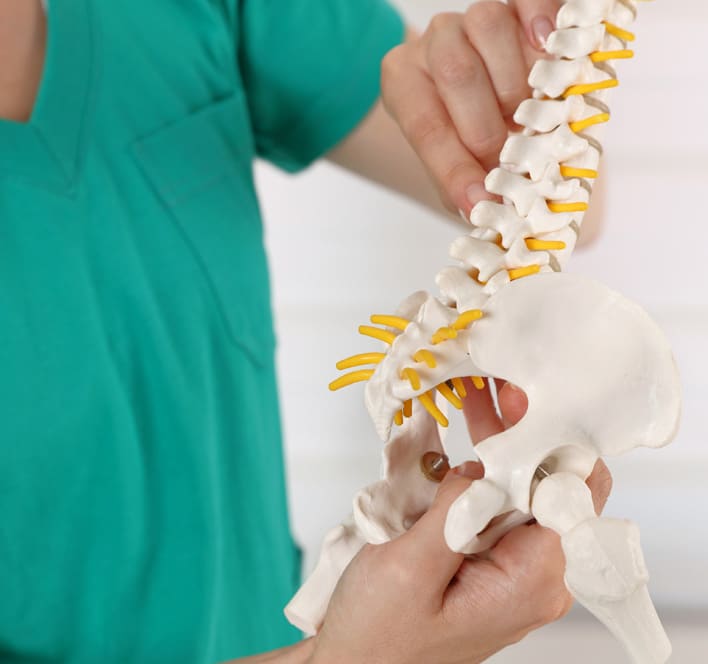The coccyx, also known as the tailbone, is the final four fused vertebrae at the base of the spine. If the coccyx is damaged or malformed, a person may experience pain, numbness, or tingling in the affected area. Depending on the severity of the injury, rehabilitation and medical care may be needed. However, in some uncommon circumstances, a coccygectomy may be necessary.
At NJ Spine & Orthopedic, we offer coccygectomy procedures for patients who suffer from pain and discomfort caused by coccyx issues. Our surgeons are highly skilled and experienced in performing coccygectomy procedures. Our patient advocates also provide personalized care and treatment for each patient. In this article, we will discuss the procedure, risks, and recovery process associated with a coccygectomy.
Why Would Someone Need a Coccygectomy?
The coccyx is not a significant part of the spine and a person can live a full life without it. However, there are certain ligaments and muscles attached to it that help to support the body’s weight as you are sitting. Therefore, a coccygectomy is typically a last resort procedure after more conventional treatments have failed to provide relief. This procedure is typically recommended for patients who suffer from severe and chronic pain due to a coccyx abnormality, such as a dislocation or fracture.
Depending on the circumstances, the surgeon may elect to remove the coccyx entirely or do a partial removal. However, patients who undergo a partial removal will typically experience a resurgence of pain and discomfort in the future, necessitating a complete removal.
Prior to undergoing the procedure, the patient should discuss the risks and benefits of the procedure with their doctor and any possible alternatives. The patient should also be aware that the procedure may not provide a permanent solution and that they may need additional treatments in the future.
How Is a Coccygectomy Performed?
Typically, the surgery will require general anesthesia, meaning you will be fully asleep while it is performed. Because general anesthesia carries risks, you will need to undergo a thorough medical assessment prior to the procedure. This will include x-rays, blood tests, answering general questions about your medical history, and instructions on how to prepare for the surgery.
You will be placed on your stomach so the surgeon can access the coccyx by creating a small incision just above the buttocks. The surgeon will then work to separate the affected vertebrae from the healthy ones before removing the coccyx. After this is completed, the surgeon will close the incision with sutures or staples. In some circumstances, the patient may require a small drain to allow excess fluid to escape as it heals.
When the surgery is completed, you will be placed in a room as the anesthesia wears off. Once you are awake and alert, you will be given painkillers and may be asked to get up and try walking very slowly. This is to help the staff ensure that there are no immediate complications they should be aware of.
What to Expect as You Heal From a Coccygectomy
You may experience soreness after the procedure, but the pain should be manageable with over-the-counter medications. You may also find that your range of motion is limited for the first few days, so it is important to avoid any strenuous activities. It is also recommended that you avoid sitting for long periods of time while you heal.
Once you are discharged from the hospital, you will need to follow the instructions of your doctor to ensure a safe and complete recovery. This will include taking medications, following a strict exercise routine, and avoiding activities that are too strenuous. Within a few weeks, you should start to notice a decrease in pain and an increase in mobility.
Your doctor may request that you attend follow-up visits once a year to monitor the progress of your recovery. It is important to attend these visits as instructed, as this will ensure that any potential issues are addressed as soon as possible.
What Are the Risks and Complications of Coccygectomy Surgery?
As with any major surgery, there is a risk of infection, excessive bleeding, and nerve damage. You may also experience numbness in the affected area, as the nerves can become damaged during the procedure. Additionally, there is a risk of scarring and adhesions, which can cause pain and discomfort.
Finally, it is important to note that this procedure is permanent, and it may affect your ability to sit comfortably in the future. Therefore, it is important to discuss all the potential risks and complications with your doctor before deciding to proceed with the procedure.
Find Relief from Coccydynia at NJ Spine & Orthopedic Surgery
The skilled surgeons at NJ Spine & Orthopedic offer state-of-the-art care for those suffering from coccyx pain. For those seeking relief from this condition, we specialize in providing procedures, like a coccygectomy, to help reduce pain and restore mobility. Through the use of advanced surgical techniques and technologies, our experienced team of surgeons can quickly and effectively perform a coccygectomy to help provide patients with the relief they need.
Our surgeons place emphasis on ensuring that each patient receives the highest quality of care and are committed to providing personalized treatment plans that are tailored to meet their individual needs. This increases the likelihood that each patient makes a full recovery and is able to return to their daily routine as quickly as possible. If you’re suffering from coccyx pain, don’t hesitate to contact us online or call us at (866) 553-0612 to schedule a consultation today.

